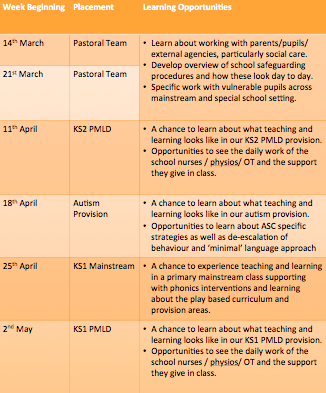This year, as my elective module, I have chosen to study Modern Foreign Languages (MFL) pedagogy. As I have already mentioned in a previous blog post, I am passionate about learning languages and therefore the push of MFL in Scottish Primary Education fills me with joy and excitement. But I know this is not the case for everyone. The 1 + 2 policy, which I believe, is fantastic in theory; does have many practical flaws. These are highlighted in the Reports and Recommendations (Scottish Government Languages Working Group, 2012) and include:
- Engaging citizens to participate in MFL teaching and learning, including pupils, parents and other members of the community, due to an over-reliance of English speakers;
- Finances causing a barrier to resourcing – while funds have been poured into the implementation of the policy over recent years; will this financial support remain consistent?
- Not all Scottish children speak English as their mother tongue, so how does this affect their learning – are they 1+2+3?
- The 1+2 does not offer a set framework, nor have the Experiences and Outcomes been altered to accommodate the policy, consequently local authorities are developing their own frameworks – how are we monitoring effective and consistent practice across Scotland?
While these are all significant issues that should be addressed, I believe the most concerning of them all is finding experienced teachers who are competent to teach more than one MFL to a higher level than previously expected. Teacher Education expects students to enter University with a minimum of a B at Higher English and a qualification in Standard Grade Mathematics (or equivalent). There, at present, is no expectation for students to have acquired a qualification in a MFL, or any of the other curricular areas for that matter. Why? Possibly because it would put MFL in a hierarchical status above the other curricular areas – that could cause considerable tension. Why should MFL be a requirement when Science or Social Sciences are not?
Never the less, I think it is an area of Teacher Education that needs to be addressed. Perhaps by making it compulsory for students to study a module in beginners French, Spanish, Italian, German, Chinese, etc.… etc. However that then raises another issue with the policy – say for example, a linguistically competent trainee teacher, who studied French as their compulsory module, is placed in a school whose L1 is German, their learning experiences in that module then become pointless, in terms of teaching at that school. So how do we choose which language to study in order to be well prepared for teaching placement?
The truth is that teachers will have to study the language of the school – the knowledge about language, intercultural understanding, literacy, oracy and vocabulary. However, as presented to us in a recent lecture, teaching learners how to learn a language, known as strategy instruction, will make pupils more autonomous in their MFL and as a result, alleviate some of the pressure of teachers having to know everything about the language.
Strategy instruction is the teaching of language learning strategies with the belief that strategies should be taught as “declarative knowledge in order to become proceduralised” (Kirsch, 2012). Language learning strategies include, and are not limited to:
- Using reference books
- Studying artefacts
- Using computers and digital technology
- Formalised studying
- Memorising
- Practising
- Inferring meaning (eg. Using knowledge of cognates)
- Playing
- Singing
- Watching television (Kirsch, 2012)
Much research has been done on language learning strategies and the autonomous language learner and how this approach enhances positive attitudes towards language learning. Until the middle of the 1980s, MFL was mainly concerned with grammar and translation. The O Level examination consisted of translation, to and from the target language, dictation and a writing piece. By the end of the 80s, communicative language teaching was becoming a more prominent feature in classrooms across Europe and focused more on the social aspects of language learning – speaking and listening. By 1985, when the GCSE was introduced, MFL in Britain was mainly centred around the four literacy skills. However the Nuffield Inquiry (2000) highlighted that 9/10 children stop learning languages at 16 due to a lack of motivation and other faculty issues. Consequently researchers began to look into methods to combat the concerns surrounding communicative language teaching and language learner strategy research was at the forefront of this movement (Grenfell, 2007).
So what does this mean for us?
While yes, our role as teachers is to teach all aspects of MFL to our pupils, it should also be our goal to instil a love of language learning in our pupils and develop their autonomy through language learner strategies. In order to do this effectively, we should embed strategies into our lessons, develop metacognitive strategies and promote independent thinking (Kirsch, 2012). The classroom culture should foster autonomy and tasks should have language learning strategies at the centre with the goal that these strategies will eventually become more concrete techniques.
For example, we could challenge pupils to find new words in the dictionary, so long as they have been taught how to use bilingual reference texts. Songs and rhymes are effective strategies so pupils could produce their own song to learn vocabulary or grammatical concepts so it is relevant to them. Pupils could challenge each other through mini quizzes and games to practice and study their vocabulary.
How would you embed language learner strategies into your practice? What other learner strategies exist outwith MFL or are transferable across curricular areas?







